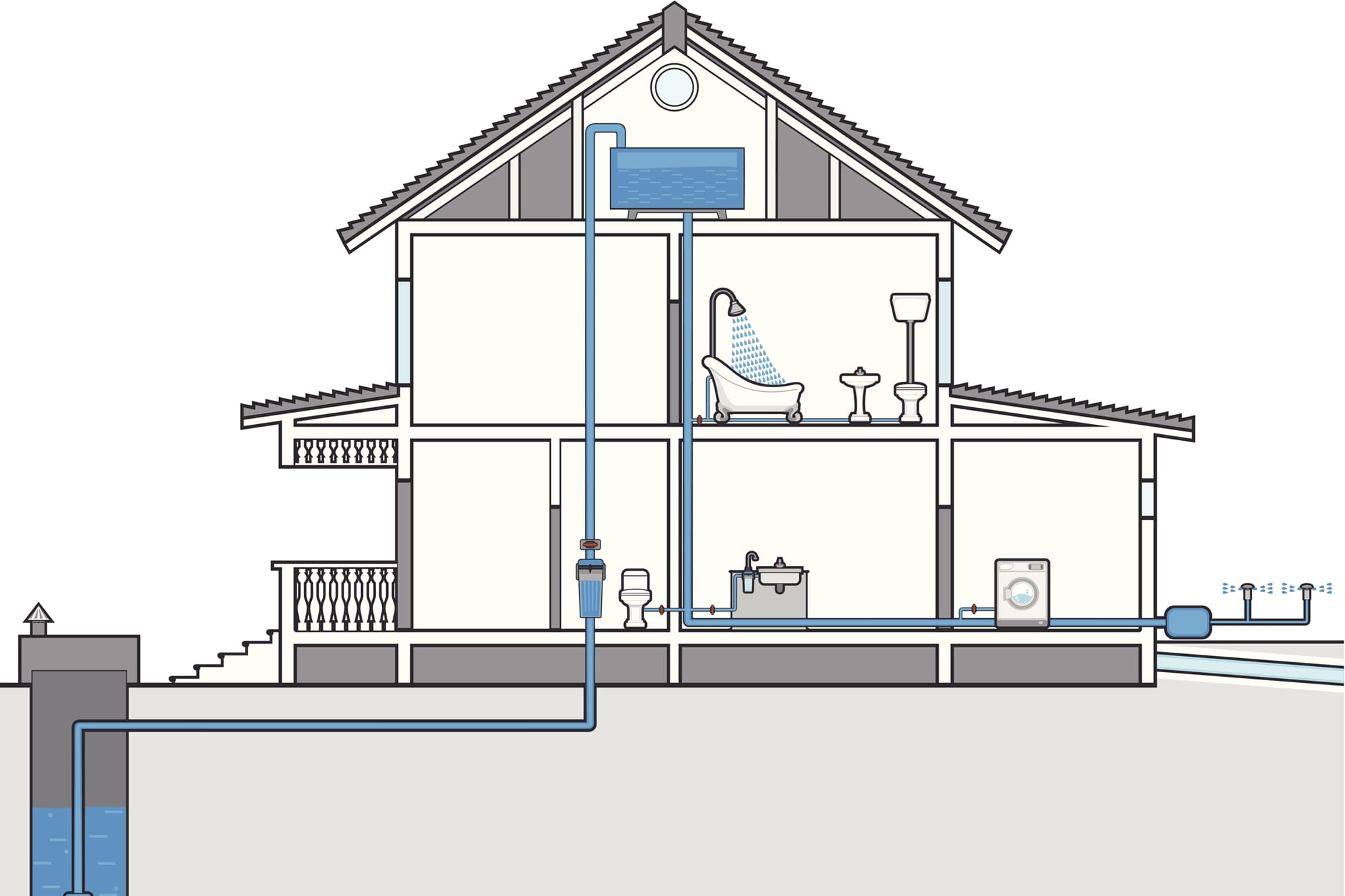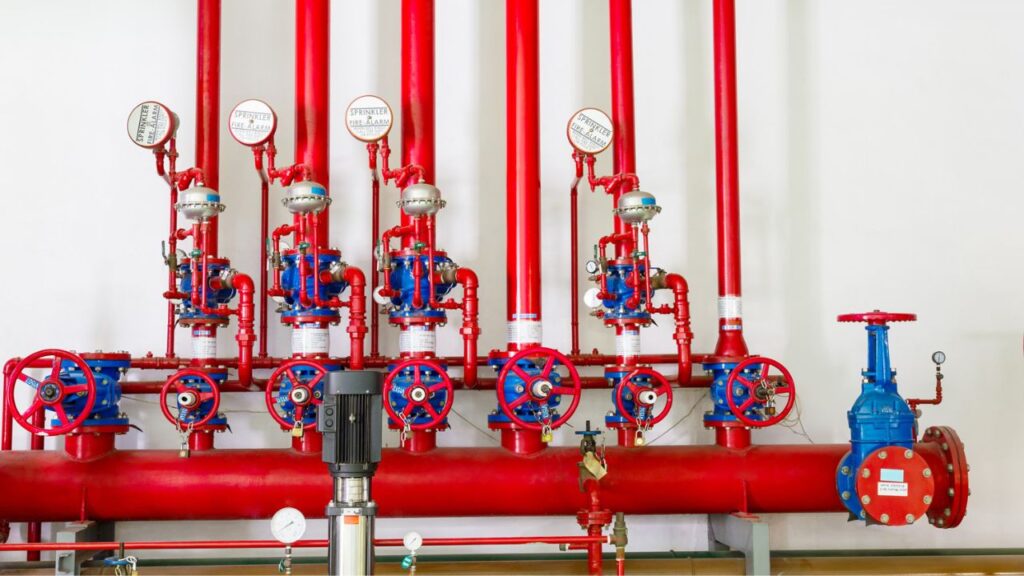The Fundamental Elements of Your Property's Plumbing System
The Fundamental Elements of Your Property's Plumbing System
Blog Article
We have stumbled on this article pertaining to Understanding Your Home's Plumbing Anatomy listed below on the internet and believe it made sense to share it with you here.

Recognizing how your home's plumbing system functions is necessary for each homeowner. From delivering clean water for alcohol consumption, cooking, and showering to safely eliminating wastewater, a well-kept pipes system is crucial for your household's health and comfort. In this detailed overview, we'll check out the detailed network that makes up your home's plumbing and deal pointers on upkeep, upgrades, and dealing with typical concerns.
Intro
Your home's plumbing system is greater than just a network of pipes; it's an intricate system that ensures you have access to tidy water and reliable wastewater removal. Understanding its parts and how they interact can help you protect against pricey repairs and guarantee every little thing runs efficiently.
Fundamental Components of a Plumbing System
Pipelines and Tubes
At the heart of your plumbing system are the pipelines and tubes that bring water throughout your home. These can be made of numerous materials such as copper, PVC, or PEX, each with its advantages in regards to toughness and cost-effectiveness.
Components: Sinks, Toilets, Showers, and so on.
Components like sinks, commodes, showers, and tubs are where water is utilized in your home. Comprehending just how these components link to the pipes system assists in detecting troubles and preparing upgrades.
Shutoffs and Shut-off Points
Valves control the circulation of water in your pipes system. Shut-off valves are critical throughout emergency situations or when you require to make repair services, enabling you to separate parts of the system without interfering with water circulation to the whole home.
Water System System
Main Water Line
The main water line connects your home to the local water system or a personal well. It's where water enters your home and is distributed to different components.
Water Meter and Stress Regulator
The water meter actions your water usage, while a stress regulatory authority makes certain that water moves at a risk-free pressure throughout your home's plumbing system, avoiding damages to pipes and components.
Cold Water vs. Warm water Lines
Comprehending the distinction between cold water lines, which provide water straight from the major, and warm water lines, which bring heated water from the hot water heater, assists in fixing and planning for upgrades.
Water drainage System
Drain Pipes Water Lines and Traps
Drain pipes carry wastewater away from sinks, showers, and toilets to the sewer or septic tank. Traps prevent drain gases from entering your home and likewise trap particles that can create obstructions.
Air flow Pipelines
Air flow pipelines permit air right into the drainage system, stopping suction that might slow down drain and trigger catches to vacant. Proper ventilation is important for keeping the stability of your pipes system.
Value of Correct Drain
Guaranteeing correct drainage protects against backups and water damages. On a regular basis cleaning drains pipes and preserving traps can protect against expensive repairs and expand the life of your plumbing system.
Water Heating System
Kinds Of Water Heaters
Hot water heater can be tankless or typical tank-style. Tankless heating units warmth water on demand, while tanks keep heated water for prompt use.
Upgrading Your Pipes System
Reasons for Upgrading
Upgrading to water-efficient fixtures or changing old pipelines can enhance water quality, reduce water expenses, and raise the worth of your home.
Modern Plumbing Technologies and Their Benefits
Check out technologies like wise leak detectors, water-saving commodes, and energy-efficient hot water heater that can conserve cash and reduce environmental impact.
Cost Factors To Consider and ROI
Calculate the ahead of time prices versus long-term financial savings when taking into consideration pipes upgrades. Lots of upgrades spend for themselves through lowered energy costs and fewer fixings.
How Water Heaters Link to the Pipes System
Recognizing just how water heaters link to both the cold water supply and warm water distribution lines helps in diagnosing issues like not enough warm water or leakages.
Upkeep Tips for Water Heaters
Routinely purging your water heater to eliminate sediment, checking the temperature settings, and evaluating for leaks can extend its life-span and enhance power effectiveness.
Typical Pipes Issues
Leaks and Their Reasons
Leakages can occur due to maturing pipes, loose installations, or high water stress. Addressing leakages without delay protects against water damages and mold and mildew growth.
Obstructions and Clogs
Blockages in drains and toilets are frequently caused by purging non-flushable things or a build-up of oil and hair. Utilizing drain displays and bearing in mind what goes down your drains can protect against clogs.
Indications of Pipes Troubles to Watch For
Low water pressure, sluggish drains, foul odors, or unusually high water expenses are indications of possible plumbing issues that should be resolved immediately.
Plumbing Upkeep Tips
Routine Evaluations and Checks
Set up yearly plumbing inspections to capture problems early. Look for indicators of leaks, rust, or mineral accumulation in faucets and showerheads.
DIY Maintenance Tasks
Basic tasks like cleansing faucet aerators, looking for bathroom leakages utilizing color tablets, or shielding revealed pipes in cold environments can stop major plumbing concerns.
When to Call an Expert Plumbing Technician
Know when a plumbing problem requires expert proficiency. Trying intricate repair services without correct expertise can lead to more damage and greater repair expenses.
Tips for Reducing Water Use
Basic practices like taking care of leaks immediately, taking much shorter showers, and running full tons of washing and recipes can save water and reduced your energy expenses.
Eco-Friendly Pipes Options
Think about sustainable pipes materials like bamboo for floor covering, which is durable and green, or recycled glass for counter tops.
Emergency Preparedness
Steps to Take Throughout a Pipes Emergency
Know where your shut-off valves are located and exactly how to shut off the water supply in case of a ruptured pipe or major leak.
Value of Having Emergency Situation Calls Convenient
Keep call information for regional plumbing professionals or emergency solutions readily available for fast reaction throughout a plumbing situation.
Environmental Influence and Preservation
Water-Saving Components and Appliances
Installing low-flow faucets, showerheads, and commodes can significantly reduce water use without compromising efficiency.
Do It Yourself Emergency Fixes (When Applicable).
Short-term repairs like utilizing duct tape to patch a leaking pipe or putting a container under a leaking faucet can reduce damage until a professional plumbing shows up.
Final thought.
Comprehending the anatomy of your home's plumbing system encourages you to keep it properly, conserving time and money on repairs. By complying with normal upkeep regimens and remaining notified about contemporary plumbing technologies, you can ensure your plumbing system operates efficiently for several years to come.
HOW YOUR PLUMBING SYSTEM WORKS
Which Pipes Do What?
Blue lines = fresh water supply entering the building Red lines = hot water supply entering the building Grey lines = pipes carrying waste away from the building and venting pipes carrying gases away from the building (through the roof) YOUR MAIN PLUMBING SYSTEMS
There are two main plumbing systems that support your home s basic plumbing needs one that brings clean water into your home, and one that sends dirty water away from your home. Connected to the toilet, bath, shower, and other faucets in your home, these two systems keep your water flowing in the right directions.
ACCESSING FRESH WATER
Fresh and clean water is brought into your home through the main water supply line . Filtered through one pipe, this water is pressured to flow into the various fixtures in your home at any given time.
This water can be sourced from a well located on your property, a pond or river (mostly cottages), or, as in most cases, from the city s municipal water treatment centre. However, it is important to note that water that is untreated, such as the water siphoned from ponds or rivers, may not be safe to drink. Personal water supplies always need to be treated for hardness and contaminants before consumed.
MUNICIPAL WATER SUPPLIES
Improve taste and odour Remove sediment Eliminate hardness Reduce chlorine COLD WATER SUPPLY VS. HOT WATER SUPPLY
Cold water flows into your home or building through the service line, which then distributes hot or cold water to your fixtures. This line is most commonly run through a central column that runs floor to floor. Hot water runs in short and straight pipes as the longer the pipeline, the more heat that will be lost in the transfer. Having shorter pipes also allows residents to access hot water more quickly.
WASTE WATER SYSTEM
Your wastewater system is divided into two parts pipes that send wastewater away from your home and venting pipes that send sewer gas away from your home. Sewage water travels through pipes that flush the water and waste towards local sewers that are operated and managed by your city or town. Most sewer systems rely on gravity to move the wastewater to where it needs to go.
The further away from your toilet or sink, the larger wastewater pipes become. This allows for waste to be disposed of from various parts of your home or business at once without pipe blockages. The angle and flow of these pipes are also essential for keeping your waste pipes clear of build up.
https://harrisplumbing.ca/how-your-home-plumbing-system-works/

I was shown that report about Exploring Your Homes Plumbing Anatomy from a good friend on our other web property. Are you aware of somebody who is curious about ? Feel free to promote it. Thanks for taking the time to read it.
Get Estimate Report this page